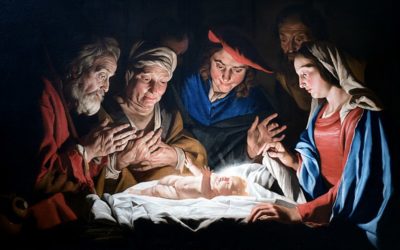After the Church of Christ was formally organized on April 6, 1830, the Lord gave a series of revelations for the new church and its members. The topics of these revelations included personal guidance of the type that might be given today in setting apart and patriarchal blessings. They also included guidance relevant to the Church as a whole on topics like sacred music and governing by common consent. All were given within the first four months of the Church’s existence when the members—every one of whom was a recent convert—were trying to figure out how to live as Latter-day Saints, a challenge that faces new converts today.
Doctrine and Covenants 23
When the Church was first organized, there were no bishops, stake presidents, or other leaders of the type to whom Church members often go today for counsel. That would all come later as the Church grew in size. In the beginning, there were just small groups of believers in geographic clusters that would evolve into what we today call “branches,” though at the time they were called “churches.” One of those clusters was in Fayette Township where the Church was organized.
Over the week after the Church was organized, five people who were family members or other close associates of Joseph Smith in Fayette received blessings to guide them. Section 23 of the Doctrine and Covenants consists of the five blessings given by the Prophet Joseph to Oliver Cowdery, Joseph’s brothers Hyrum and Samuel, their father (Joseph Smith Sr.), and Joseph Knight Sr.
For further background on the five revelations in this section, click on the links below:
Revelation, April 1830–A [D&C 23:1–2], given to Oliver Cowdery
Revelation, April 1830–B [D&C 23:3], given to Hyrum Smith
Revelation, April 1830–C [D&C 23:4], given to Samuel Smith
Revelation, April 1830–D [D&C 23:5], given to Joseph Smith Sr.
Revelation, April 1830–E [D&C 23:6–7], given to Joseph Knight Sr.
Doctrine and Covenants 24
The three principal branches of the Church in its early days were all in New York: (1) Manchester, the place south of Palmyra where the Joseph Smith Sr. and Lucy Mack Smith family were trying to develop a one-hundred-acre farm and where the Sacred Grove was located; (2) Fayette, where Peter Whitmer Sr., Mary Musselman Whitmer, and their family lived and where believers gathered on April 6, 1830, to organize the Church; and (3) Colesville, where the Knight family lived northeast and across the state line from Joseph and Emma Smith’s home in Harmony, Pennsylvania.
Given the modes of travel in those days, the distances between the three branches was substantial, and the Church’s two leaders—first and second elders Joseph Smith and Oliver Cowdery, respectively—had to juggle supporting the three branches with countering persecution that continued to mount and at times became intense. In July 1830, the Lord gave them the revelation that is now section 24 of the Doctrine and Covenants.
For further background on this revelation, click here.
Doctrine and Covenants 25
Among the dozens of revelations given to individual members during the Church’s earliest months was one for Joseph Smith’s wife, Emma Hale Smith, who was baptized June 28, 1830. It begins with the Lord calling her “my daughter” and explaining that “all those who receive my gospel are sons and daughters in my kingdom” (verse 1).
The section outlines “the office of thy calling” (verse 5), which includes supporting her husband (verse 5), serving as his occasional scribe (verse 6), expounding scriptures, and exhorting the Church “according as it shall be given thee by my Spirit” (verse 7).
It also designates her as “an elect lady” (verse 3), presaging the organization of the Relief Society in Nauvoo nearly twelve years later in which that title and this revelation were referenced. During the first Relief Society meeting, Joseph Smith “read the Revelation to Emma Smith, from the book of Doctrine and Covenants; and stated that she was ordain’d at the time, the Revelation was given, to expound the scriptures to all; and to teach the female part of community; and that not she alone, but others, may attain to the same blessings.”
In section 25, the Lord also directs Emma to “make a selection of sacred hymns” (verse 11). Next to the four standard works, the Church’s hymnals may be the most influential doctrinal works, and Emma helped compile the first one, published in 1835.
For access to a copy of this early hymnal and a historical introduction to it, click here.
Doctrine and Covenants 26
Like many of us today, Joseph and his associates in the early Church struggled to balance spiritual and temporal duties. There was enough work in the Church to occupy them full-time. Yet they needed to work their farms and provide for their families too.
Section 26 provides specific direction to Joseph, Oliver, and their associate John Whitmer about such matters and also tells them to do all things by “common consent,” a concept that develop further over time and is the reason for our sustaining of Church leaders at conferences and Church members in their individual callings today.
For further background on this section, click here.
(Photo credit for image at top of post: Daguerreotype of Emma Hale Smith (1804-1879) around age forty, ca. 1845, public domain copied from https://en.wikipedia.org/wiki/Emma_Smith#/media/File:EmmaHSmith3.jpg [accessed Mar. 7, 2021)].



